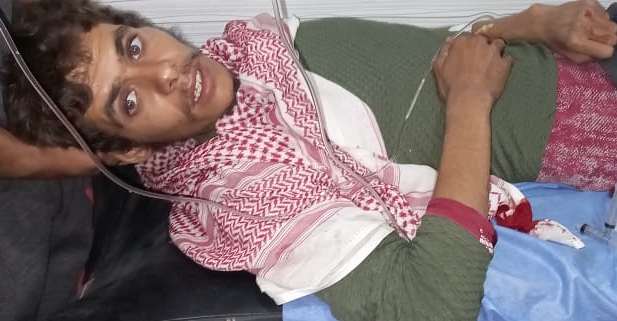Report: ISIS sleeper-cell attacks down, Hol Camp and Deir-ez-Zor remain flashpoints

Key Points
- Overall attacks decreased 11% (51, 45) in October, with 69% of those attacks taking place in Deir-ez-Zor where attacks also saw a 28% decrease (43 to 31)
- While raids also decreased this month by 20% (24, 19), arrests saw a 47% increase (38, 56)
- Several attacks took place in Hol Camp, targeting Iraqi residents, along with several escape attempts
- Assassination attempts decreased 37% (19 to 12), but continue, including an attempted car-bombing targeting Abu Khawla of the Deir-ez-Zor Military Council
In Depth
Attacks decreased slightly by 11% this month across all regions of North and East Syria, with the majority (69%) as always taking place in Deir-ez-Zor, though attacks also decreased by 28% in the troubled eastern region. 25% of those attacks were left unclaimed and the remaining 75% attributed to ISIS, with no other group claiming responsibility. Attacks in October resulted in an estimated 10 fatalities, and 27 injuries. Fatalities are believed to have decreased 33% (15, 10) since September while injuries saw a 10% decrease (30, 27).
Outside of the 31 attacks and 10 raids taking place in Deir-ez-Zor, 7 attacks and 4 raids occurred in Heseke, 4 attacks and 3 raids in Raqqa, and 3 attacks and 2 raids in Manbij. No attacks occurred in the Kurdish-majority areas near the Turkish border. Since the Turkish invasion in October 2019, these regions have seen less attacks by ISIS and occasional but inconsistent violations by Turkey and their proxies. ISIS’ tactics have changed from targeting highly populated areas with car bombs, and suicide attacks to more precise assassinations using firearms or IEDS.

In total 19 raids took place in October, a 20% decrease (24, 19) from the previous month. These raids resulted in a 56 arrests, a 47% (38, 56), suggesting that even if fewer raids took place they were more targeted and achieved more effective results – a key demand voiced by protesters in Deir-ez-Zor back in August.
One assassination attempt targeted Abu Khawla of the Deir-ez-Zor Military Council. An IED was placed on his vehicle, but no-one was seriously harmed as a result. The official DZMC spokeswoman, Lilwa Abdullah, also survived an assassination attempt the previous month. In August, protesters had also demanded that Abu Khawla be removed from his post and replaced, amid allegations of corruption.
Negotiations over a new political settlement in Deir-ez-Zor remain underway between tribal figures, the SDF and its political counterpart organization, the SDC. SDC this month held two public consultations in Deir-ez-Zor to hear feedback from key local actors about the performance of the SDC, AANES and SDF in the region, and how they can be improved. Attacks like that which targeted Abu Khawla, SDF General Commander Mazlum Abdi said in a statement, “bear the fingerprints of parties that do not want stability in the region and aim to undermine efforts to combat terrorism and defeat ISIS.”
After the decision to release all Syrian nationals being kept in Hol Camp who do not stand accused of a violent crime, a rise has been detected in escape attempts by foreign ISIS affiliates, with at least three such escape attempts being thwarted this month by the camp’s security forces. In total there were over eight arrests in the camp in October. Three firearm attacks were also confirmed, resulting in three deaths, all of Iraqi nationals. This is in addition to the six attacks, two deaths and seven serious injuries documented in September following the announcement.
Rojava Information Center researcher Robin Fleming said:
“Despite efforts being made to secure the region, with increased arrests resulting in decreasing attacks, as well as the series of Syrian Democratic Council meetings arranged to hear the complaints, critiques and proposals of civilians, tribal leaders and opposition leaders, the assassination campaign in Deir-ez-Zor continues. This included an unclaimed attack targeting the controversial Abu Khawla, head of Deir-ez-Zor Military Council, who was a focal point as tensions reached a peak during August protests.
This attempted assassination points to continued dissatisfaction and tensions in the region, with officials pointing to destabilization efforts by outside actors though the situation in Deir-ez-Zor is gradually improving. Outside of Deir-ez-Zor tensions also are on the rise in Hol Camp. Escape attempts by foreign ISIS affiliates and attacks targeting Iraqi nationals within the camp point to a new reality in the camp, as civilian IDPs are gradually able to leave and steps are taken to shut down ISIS’ continued organization within the vast camp.”
Please contact us for the fully sourced data-set sortable by incident type and location, live map showing all ISIS and other sleeper-cell attacks since the start of the year, the full interview with the fire-fighter, and further analysis. This data was produced in collaboration with OSINT researcher Caki, and can be explored on the live map here.

